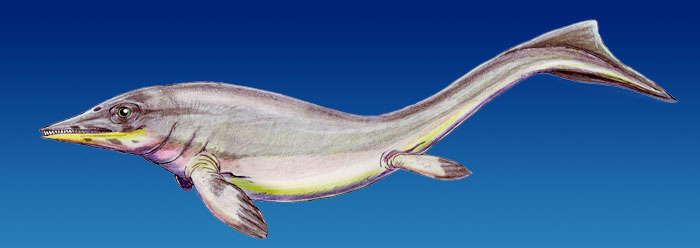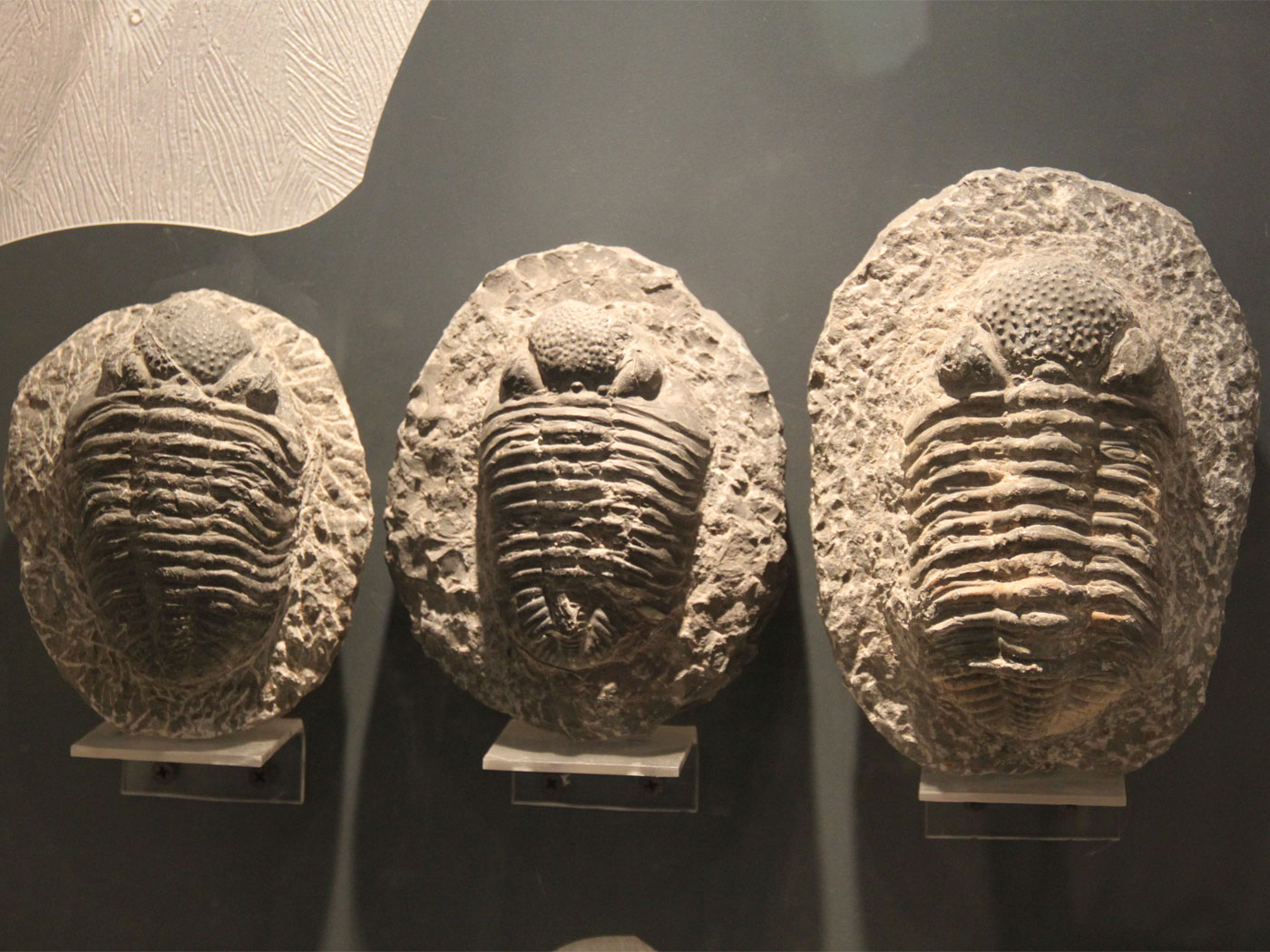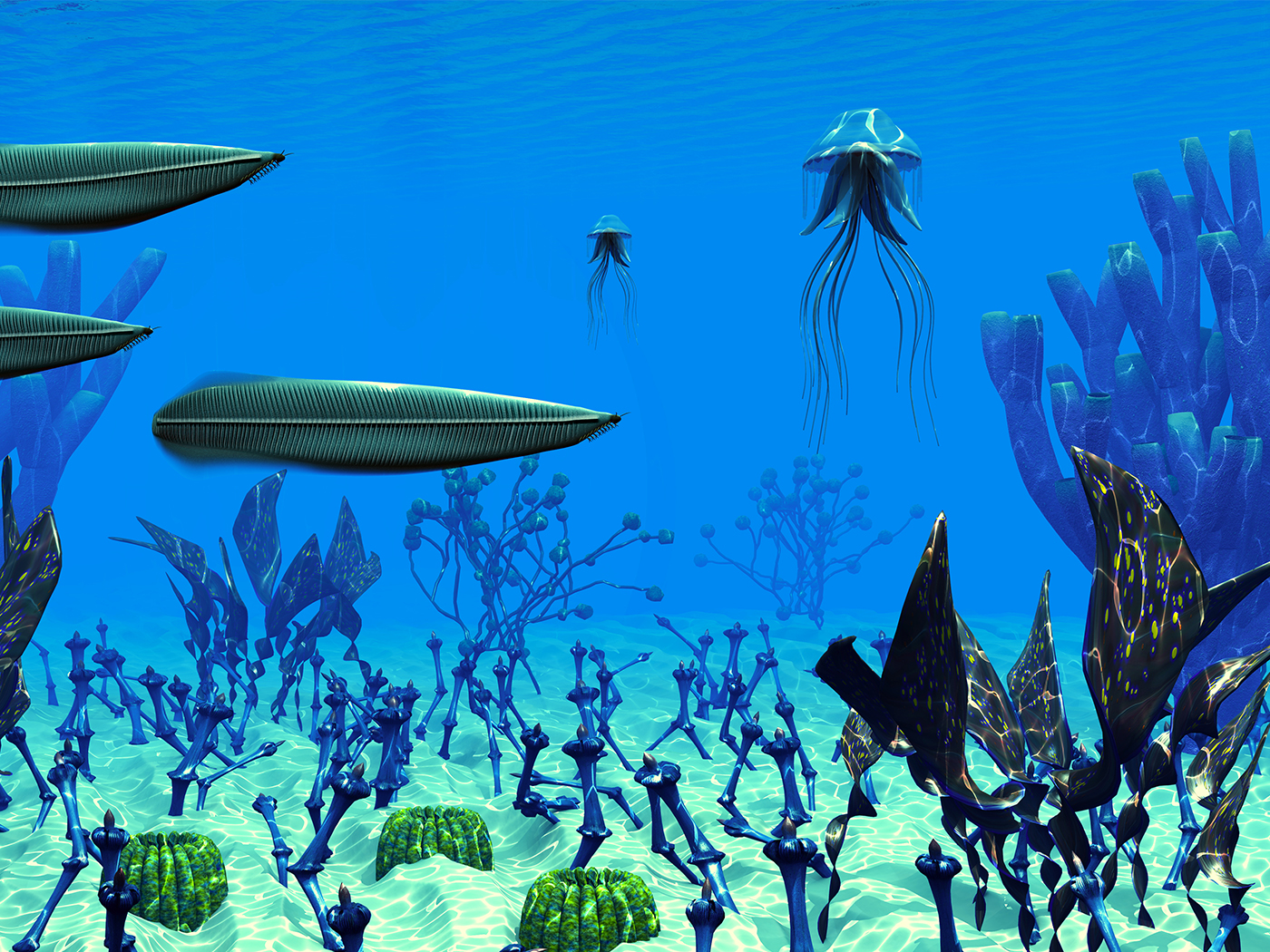Recently there has been some celebration from the Darwinian community regarding a discovery of a fossil1 that allegedly links terrestrial animals to their future aquatic relatives: the ichthyosaurs.
Cartorhynchus lenticarpus is proclaimed by some evolutionists to be an amphibious ancestor of the ichthyosaurs, aquatic reptiles whose name means "fish lizards." Rachel Feltman of the Washington Post was jubilant, saying this "fossil could prove a problem for creationists."2
But like all "missing-link" stories, this statement should be taken with a grain of salt, especially when it comes to the origin of this particular ichthyosaur specimen. Based on their many fossils, we know ichthyosaurs were a common aquatic reptile of the pre-Flood world.3 Evolutionists suggest that "ichthyosaurs probably branched off from other diapsids [having a skull with both ventral and dorsal temporal openings on each side]"4 long ago, evolving from an unknown terrestrial reptile ancestor. The Post article jumps right in with lead author of the study, Ryosuke Motani of UC Davis, declaring "the gap has been filled" and Feltman stating the 248 million year-old Cartorhynchus is "smack dab in the middle of the ichthyosaur family."
Evolutionists should be cautious. The last "missing link" between ichthyosaurs and terrestrial creatures was discovered in 1982 and called Utatsusaurus, but left paleontologist Michael Benton unconvinced. Instead of a missing link, he labeled Utatsusaurus an ichthyosaur because it shows "typical ichthyosaurian characters."5 One wonders what other vertebrate paleontologists think of the new kid on the block, Cartorhynchus. For example, cladists (evolutionists who use a method of classification that uses only evolutionary genealogies) maintain, "Cartorhynchus is actually the first representative of a whole new clade [a monophyletic group] of ichthyosaur-like pachypleurosaurs."6 The evolutionary positioning of Cartorhynchus suggested by Motani has been criticized by cladists as having "big problem[s]."
Which evolutionary group is right? Traditional gradualists (Neo-Darwinists), cladists, or those who embrace punctuated equilibria?
In the real world, it appears the fossil record is the last place an inquisitive individual should go if they are seeking evidence for macroevolution.7 Indeed, evolutionary paleontologist Benton recently stated,
A key question paleontologists always ask is whether the fossil record is good enough to tell the history of life or whether it is hopelessly riddled with error. Opinions have wavered back and forth over the years, but it is important to be aware of the context.8
With a dismal fossil record that has yet to document a single evolutionary series from one kind of plant or animal to another kind, the paleontologist should be extremely careful when declaring the discovery of any new species as a transitional form. Those investigating the Cartorhynchus fossil must first ask some basic questions: Does it have a vertical tail fluke? A dorsal fin? These are traits of the common ichthyosaur. The Cartorhynchus fossil has a short snout, but most ichthyosaurs (and mesosaurs and thalattosaurs) had beak-like, elongated snouts. Given the fact that the fossil record provides no compelling transitional forms, could it be that this new fossil has no genetic connection with ichthyosaurs, but instead is just another newly discovered extinct reptile?
References
- Motani, R. et al. 2014. A basal ichthyosauriform with a short snout from the Lower Triassic of China. Nature. Published on nature.com November 5, 2014, corrected online November 10, 2014, accessed November 15, 2014.
- Feltman, R. 2014. Newly discovered fossil could prove a problem for creationists. Washington Post News. Posted on washingtonpost.com November 5, 2014, accessed November 7, 2014.
- Sherwin, F. 2013. The Intriguing Ichthyosaur—an Evolutionary Fish Story? Acts & Facts. 42 (6): 13.
- Thain, M. and M. Hickman. 2004. Dictionary of Biology. New York: Penguin Books, 363.
- Benton, M. 2015. Vertebrate Paleontology, 4th ed. Malden, MA: Wiley-Blackwell, 152-53.
- Cartorhynchus: An ichthyosaur-mimic, not a basal ichthyosaur. The Pterosaur Heresies. Posted on pterosaurheresies.wordpress.com, Nov. 7, 2014 accessed November 9, 2014.
- Morris, J. and F. Sherwin. 2010. The Fossil Record. Dallas, TX: Institute for Creation Research, 129-78.
- Benton, Vertebrate Paleontology, 39.
Image credit: Copyright © 2014 Dmitry Bogdanov (via Wikipedia). Adapted for use in accordance with federal copyright (fair use doctrine) law. Usage by ICR does not imply endorsement of copyright holders.
Article posted on November 24, 2014.
*Mr. Sherwin is Research Associate, Senior Lecturer, and Science Writer at the Institute for Creation Research.

























